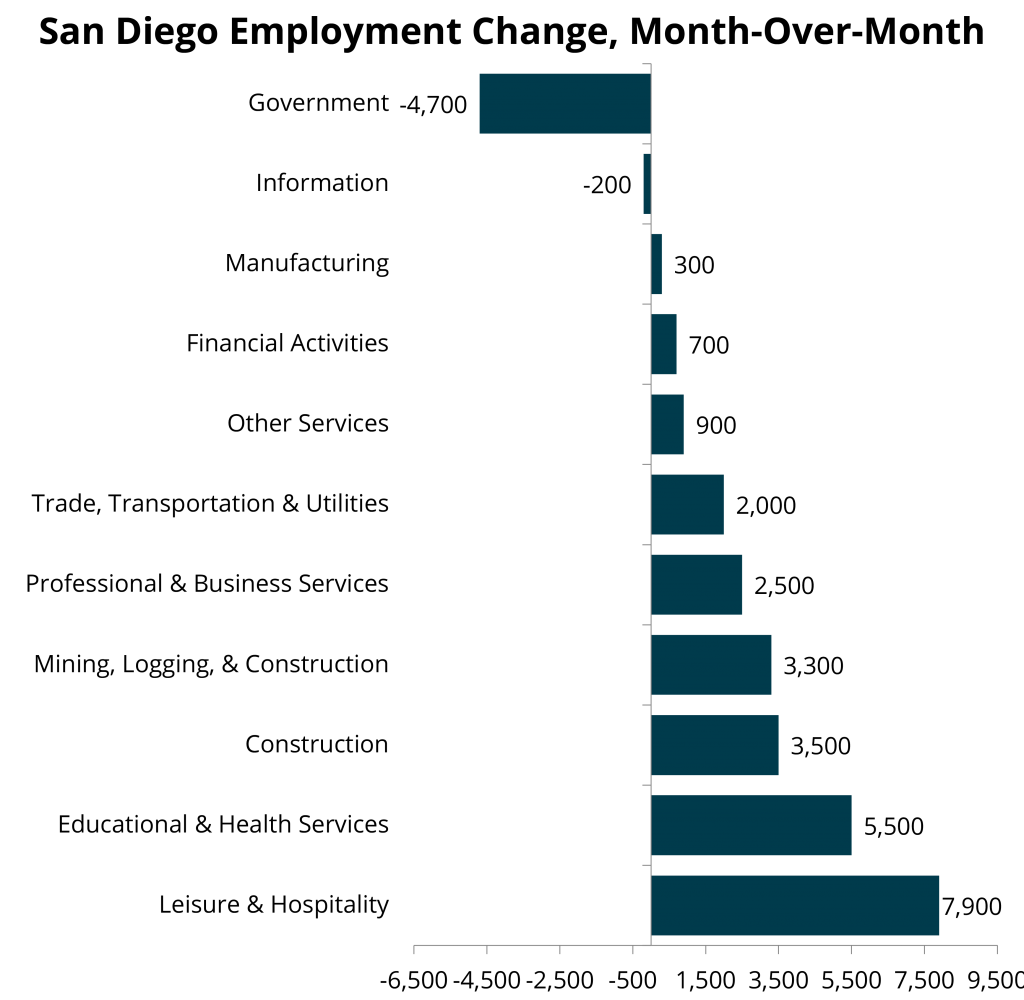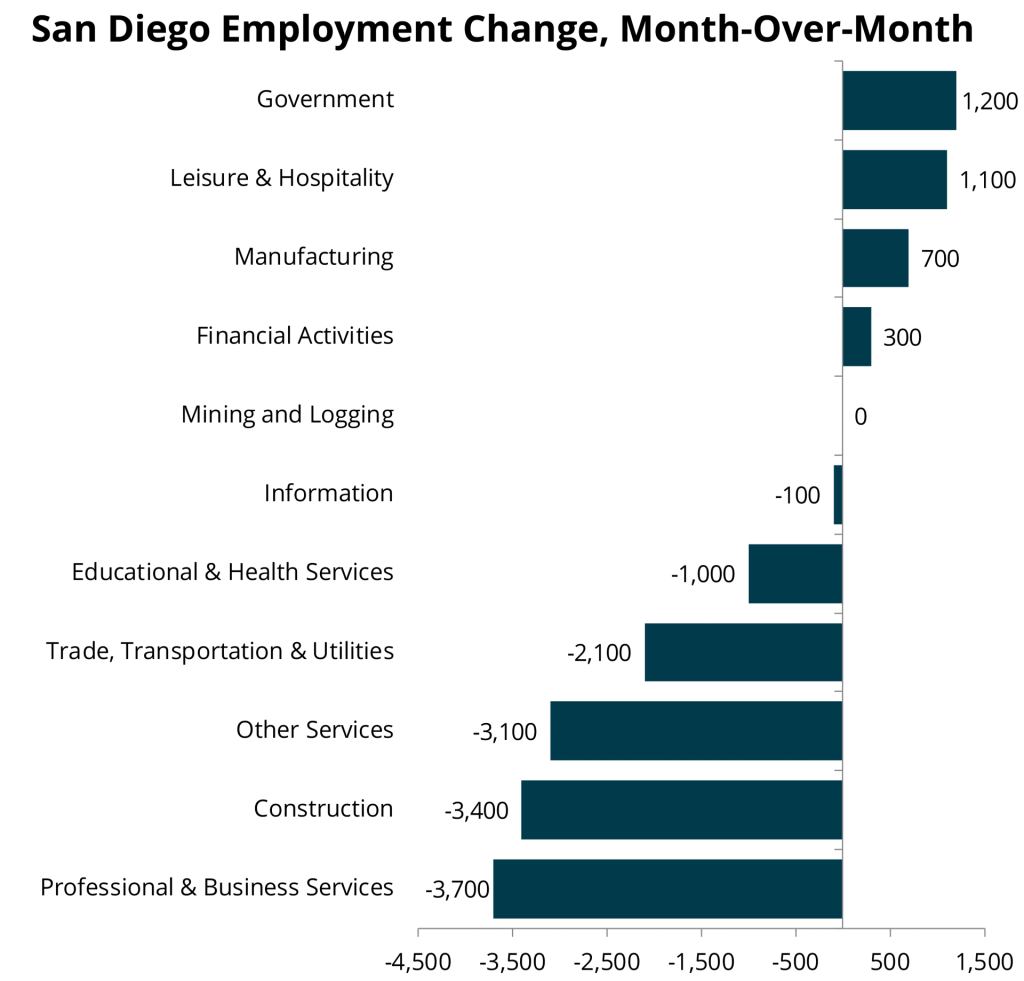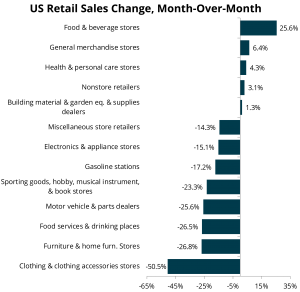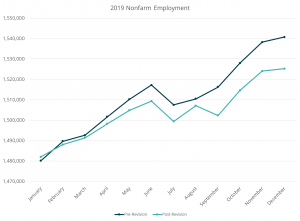Each month the California Employment Development Department (EDD) releases employment data for the prior month. This edition of San Diego’s Economic Pulse covers May 2020 and reflects some effects of the coronavirus pandemic on the labor market. Check out EDC’s research bureau for more data and stats about San Diego’s economy.
Unemployment Unchanged
The region’s unemployment rate was 15.0 percent in May, unchanged from a revised 15.0 percent in April, and far above the year-ago estimate of 2.8 percent. The region’s unemployment rate remains lower than the state unemployment rate of 15.9 percent, but higher than the national unemployment rate of 13.0 percent (not seasonally adjusted) during the same time period, respectively. Read more about EDC’s unemployment analysis.
Employment Bouncing Back
Between April 2020 and May 2020, total nonfarm employment in San Diego increased from a revised 1,290,800 to 1,309,000, a gain of 18,200 jobs. Overall, from February when the pandemic first began to May 2020, San Diego employment has declined by 205,500 jobs. In California, nonfarm employment decreased by 2.9 million in May from the month prior, and payroll employment increased by 2.5 million in the U.S. during the same time period.
Compared to a year ago, San Diego nonfarm employment declined by 195,800 jobs or 13.0 percent. In California, total nonfarm employment decreased by 2.3 million jobs, or 13.0 percent, from May 2019 to May 2020 compared to the U.S. annual loss of 17.7 million jobs, or 11.7 percent.
Sector Employment Slowly Returns
The leisure and hospitality industry accounted for the largest monthly gains, adding 7,900 jobs in May, primarily concentrated in food services and drinking places as restaurants began to reopen. While it is encouraging that the food services and drinking places sector has added jobs the last month, the industry has 40 percent fewer jobs compared to a year ago.
Educational and health services increased employment this month by 5,500 jobs, concentrated by 6,300 positions in health care and social assistance. Non-emergency health services added 5,800 of those positions, which accounts for roughly half of the jobs lost between March and April.
Construction followed with an additional 3,500 positions, and business/professional services recovered 2,500 of the 11,000 jobs lost between March and April. The bulk of the job gains in professional services came from administrative services, which includes temp help and employment services. This is particularly encouraging, as these types of jobs tend to become permanent over time and is an indicator of job growth in the relatively near future.
The accommodation industry continues to struggle with a monthly decline of 1,900 jobs, or 14 percent, in May. Accommodation industry employment has declined by nearly 64 percent from May 2019 to May 2020. While San Diego employment in accommodation is larger than many other regions, the job losses are in line with both San Francisco and Los Angeles Counties.
While job losses were not as extreme this month, clothing stores employment is about half its level from a year ago.
The largest monthly employment decline was in government, with a loss of 4,700 jobs, concentrated in state government — particularly state government education, which includes public colleges —and consistent with national trends.
As San Diego’s economy continues to reopen, current labor market trends provide a glimpse of the long-term effects on the economy. While some industries have brought back jobs, others are slower to recover. And while the May data brings some good news, it will take some time to recover from unprecedented levels of unemployment.




